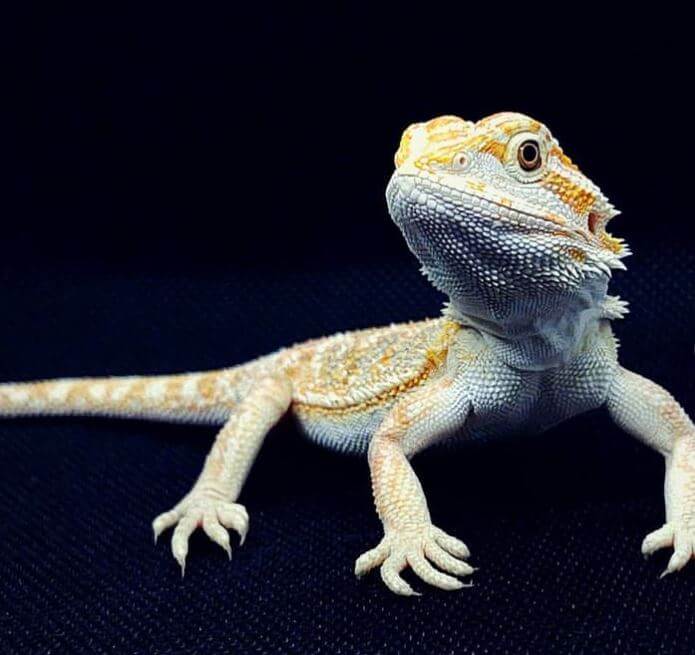Dunner bearded dragon VS normal bearded dragon: What is the difference between them?
With pet lovers, a bearded dragon has become a familiar and cute pet for decades. However, there might not be many owners who know how to distinguish different types of those dragon morphs, particularly between a dunner bearded dragon vs a normal one.
In this article, we provide facts about those animals and their differences. Scroll down to know the details!
Related Posts:
- Can Beardies Eat Honeydew Melon?
- Why Does My Beardie Stare at Me?
- Can Beardies Eat Radish Greens?
- Can Beardies Get High?
- Beardie Body Language: How to Figure Out?
- How to Tell If Your Beardie Is Happy?
- Bearded Dragon vs. Chameleon: Facts and Differences
Dunner Bearded Dragon VS Normal Bearded Dragon: General Information
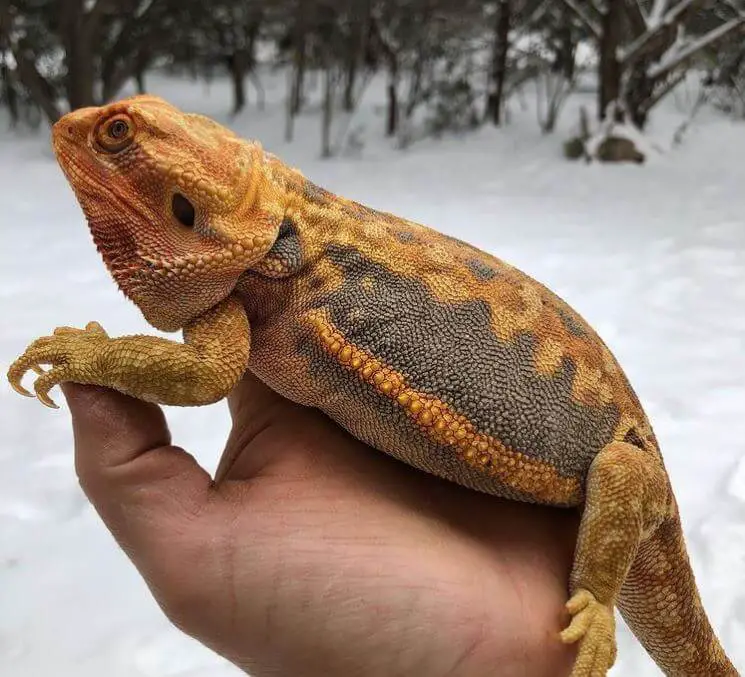
1. What Is a Normal Bearded Dragon?
A typical bearded dragon is a reptile that mostly lives in dry or amid-dry areas in Australia. She has the armor of spiny reptilian scales.
Based on her emotion, the spikes under the chin can puff up anytime.
There are around nine kinds of bearded dragons found globally.
Although their shapes are like dragons, their attitudes are pretty gentle and full of curiosity.
They often have yellow or brown coats with organized strips going down their bodies.
Besides, those normal animals have dark nails and tough scales.
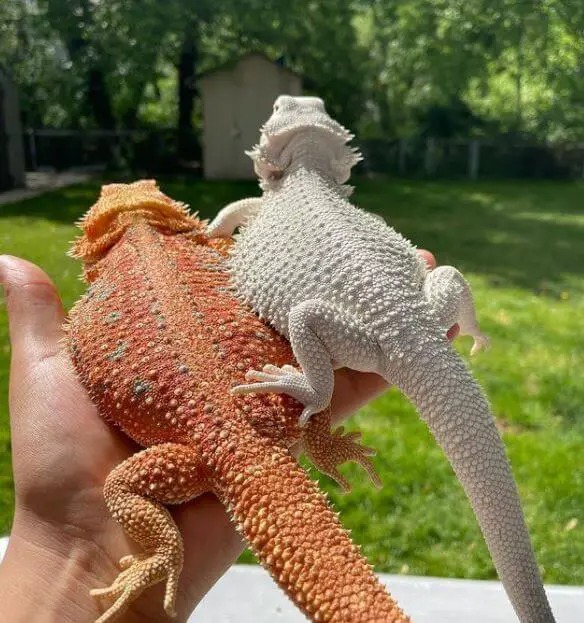
| Common name | Bearded dragon |
| Scientific name | Pogona |
| Type | Reptiles |
| Diet | Omnivore |
| Average life span | From four to ten years |
| Size | 18 to 22 inches |
| Weight | 10 to 18 ounces |
2. What Is a Dunner Bearded Dragon?
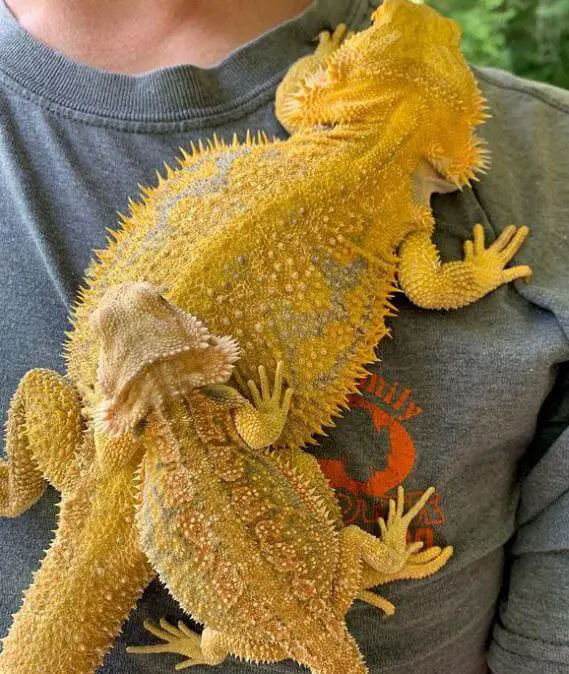
A dinner bearded dragon is identified as a fancy or a morph with a distinct color pattern, foot shape, and scale pattern.
So, what makes that type of morph?
A morph begins with a slight change in the DNA, leading to a different look.
Like other animals, the mutation takes time to distribute, and it depends on many factors, especially on the environment for replication.
Recently, not only are there natural mutations that might occur over millions of years. Humans invented some efficient ways to make artificial changes in the animals’ DNA.
For example, they can consistently mate two beardies with similar mutations to have a morph they want.
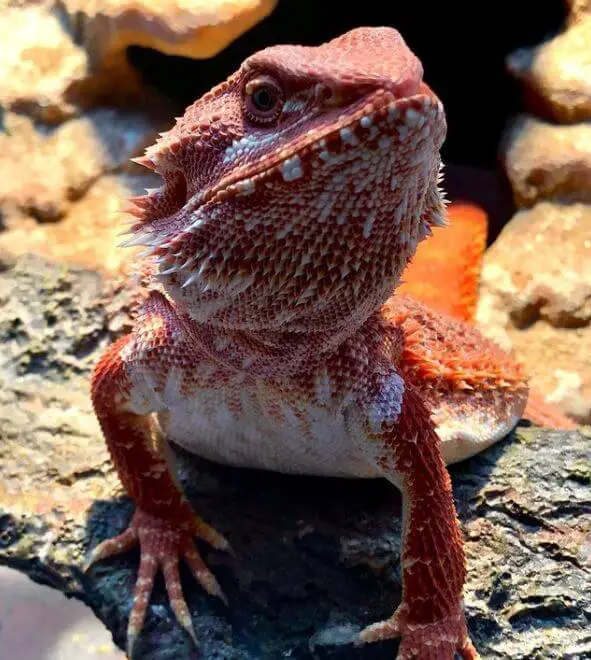
The dunner gene and leatherback gene are two crucial dominant types of genes found on bearded dragons.
That said, if your animal has dunner features, he owns a similar gene.
The animal we are discussing is produced by Kevin Dunn first.
The reason why those beardies are so popular these days is their impressive and unique physical attributes, which I would describe below.
Let’s take a look at this video to know more about the particular morph:
| Common name | Dunner bearded dragon |
| Scientific name | Pogona morph |
| Type | Reptiles |
| Diet | Omnivore |
| Average life span | From four to ten years |
| Size | 18 to 22 inches |
| Weight | 10 to 18 ounces |
Dunner Bearded Dragon VS Normal Bearded Dragon: Differences
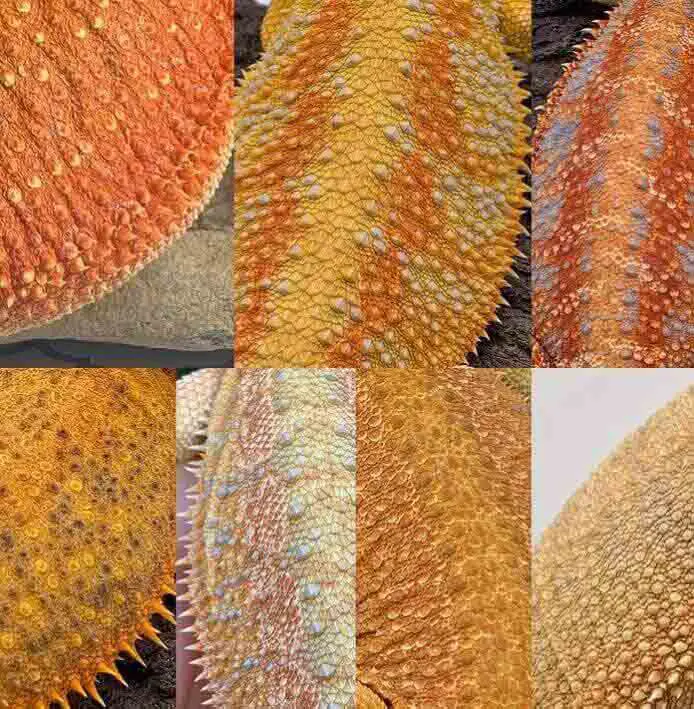
There are three main differences between a dunner bearded dragon VS a normal bearded dragon, including:
- Scale pattern – While a dunner has conical scales, a regular one features teardrop-shaped scales.
- Coloration – Instead of standard stripes, dunner beardies have spots on their back.
- Feet – Buyers can quickly notice a typical bearded dragon born with shorter feet than his dunner counterpart.
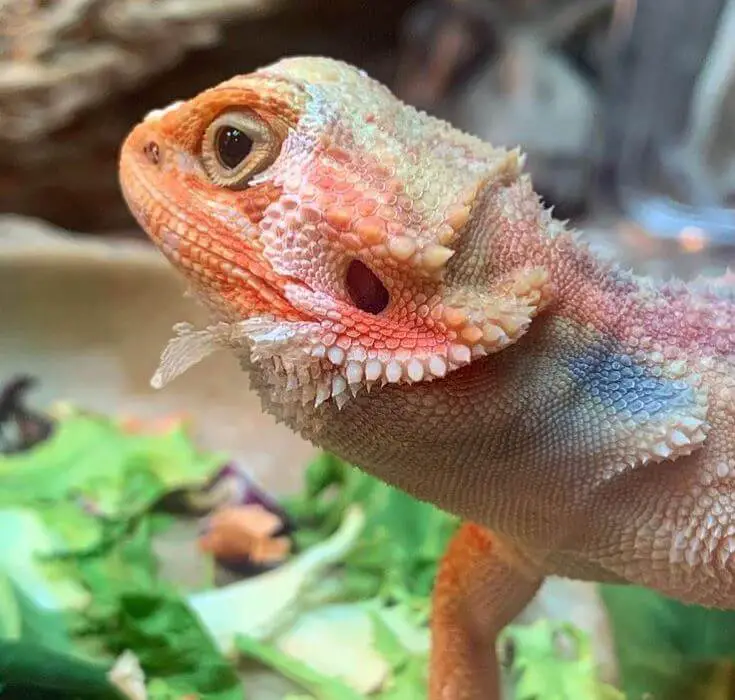
1. Different Scales
The first difference between dunner bearded dragons and normal ones is their scales.
While the ordinary dragon has teardrop-shaped scales, her morphs’ are more conical.
Therefore, you might see that dunners have a more rough and rugged appearance than usual.
Furthermore, their scale direction appears to be relatively distinct.
For instance, a dunner usually has scales pointing to her body’s left and right sides.
However, ordinary guys tend to have thin scales pointing down to their tails.
Moreover, many owners notice that scale pattern is another broad difference between those dragons.
Compared to the flat and consistent scales of regular beardies, dunner ones have disorganized bony plates to protect their body.
Some even commented that they have a “mountainous” look with a unique amour.
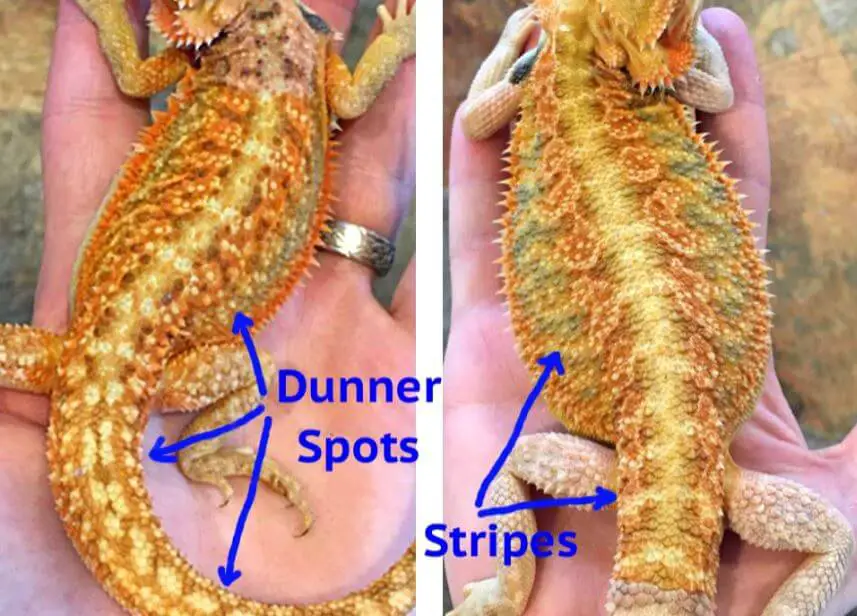
2. Coloration
With the coloration or color pattern, each type of beardie has entirely dissimilar ones.
Concerning the typical bearded dragons, there are symmetrical stripes with various colors running smoothly down the length.
By contrast, the fancy’s back has another type of color pattern.
Instead of genetic strips, they feature spots that do not lie evenly to the tails.
Besides, those spots do not have the same size as well.
3. Feet
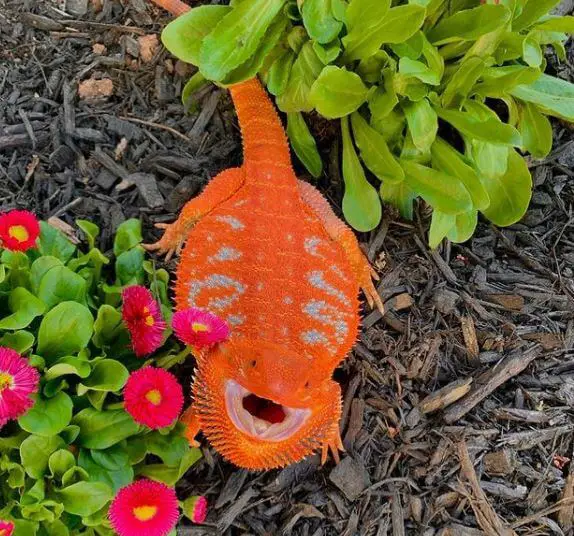
Standard bearded dragons have relatively shorter feet and nails than dunner ones.
As a result, that kind of morph typically runs away from predators or hunting their prey faster.
4. Other Distant Features
Besides the main differences, the morph differs from normal ones in skin texture, tail pattern, and stress lines.
Regarding the skin texture, you may feel the dunners bumpier and tougher while holding them.
It is also easier to notice them with their particular and disorganized scale shape.
Some customers compared their pets to real dinosaurs even.
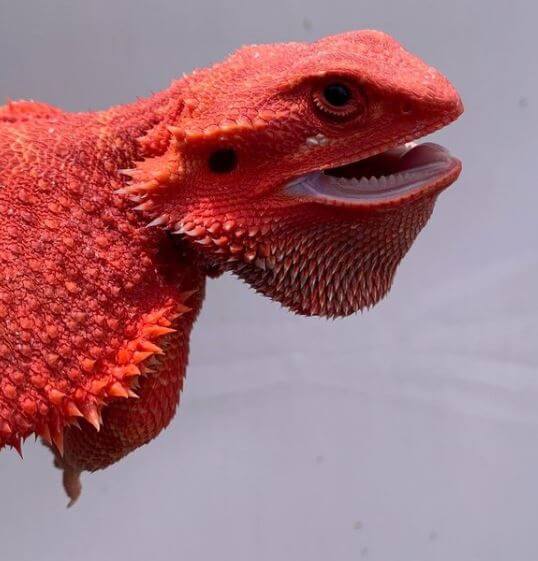
Secondly, most beardies have fine and thin bands with dynamic colors going around and down the tails.
With the morph guys, the seats are decorated with spots and speckles. Some might have noticeable marks, whereas some only feature tiny and faded ones.
What’s more, when a bearded dragon feels stressed or smells danger, he would show stress marks on his bellies.
With regular animals, the marks are dark ovals.
Those stress signals appear to be complete circles on the fancy’s bellies.
5. Prices
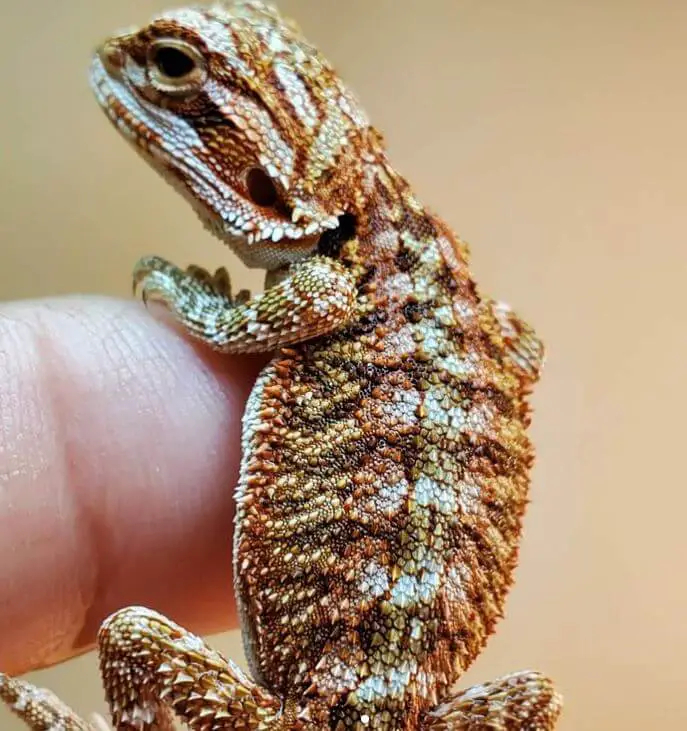
Because of distinct features and different ways to breed and raise those types of lizards, they are sold at varying levels of prices.
With regular beardies, you only need to pay from $40 to $75.
Dunner bearded dragon price is higher, at around $300 to $500.
The payment differs in the animal’s various periods as well.
For instance, a bearded baby only costs more or less $80 in a pet store.
Raising adults requires a lot of money, energy, and experience, so they are more expensive.
Besides, buying a mature animal means you can avoid juvenile time.
Dunner Bearded Dragon VS Normal Bearded Dragon: Similarities
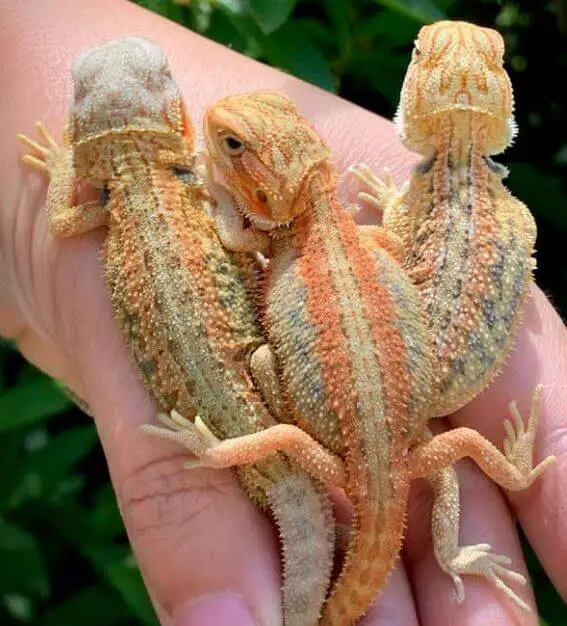
There are many similarities you can notice between a dunner and normal beardies.
1. Behavior
One of the considerable similarities between those kinds of bearded dragons is their behavior.
Like any territorial animal, they can show their power aggressively to protect their land from enemies.
Sometimes, when the female has submissive behaviors, she might be attacked by her “boss.”
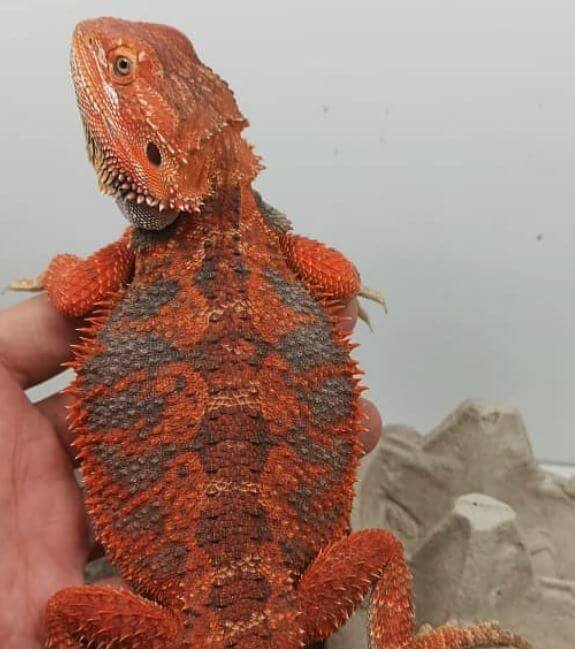
Both fancy and regular dragons use a beard to talk with each other.
Particularly, when they sense the danger nearby, they would puff off their beard, open deep mouths, and lift their chins.
They seem to become more prominent with those expressions.
From time to time, they hiss like a train whistle to inform the threat.
Moreover, those animals change the beard’s colors and bob their heads to communicate as well.
When you see a beardie raises his head quickly, that means a signal of dominance.
However, with a slow bob and an arm-waving, he is submissive.
2. Food
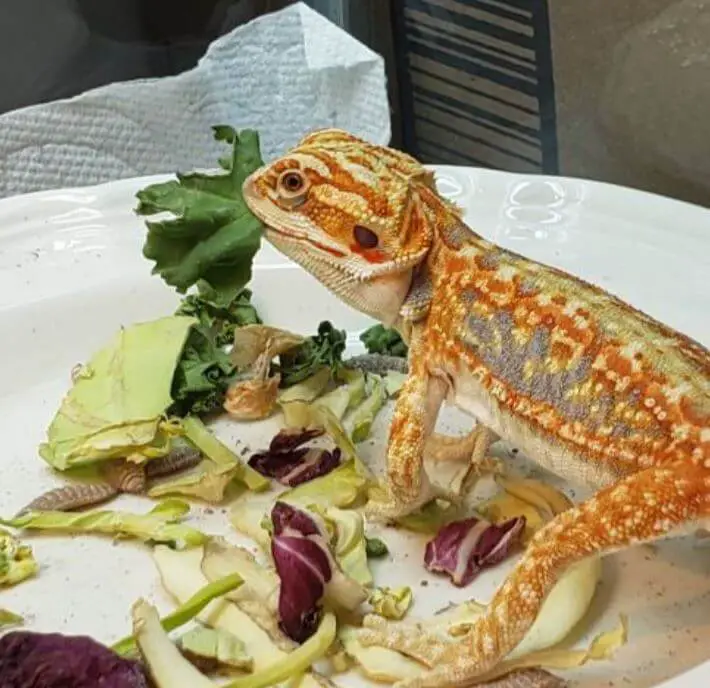
Different from other animals, some beardies can digest various amounts of stuff.
They have solid and sharp jaws, making it easy to crush and clench hard-shell insects like cockroaches.
Furthermore, they also eat flowers, fruits, vegetables, and tony rodents or lizards.
Read More:
- Can Beardies Eat Squash?
- Can Beardies Eat Peas?
- Do Beardies Eat Chard?
- Can Beardies Eat Dill?
- Can Beardies Eat Rosemary?
3. Habitat
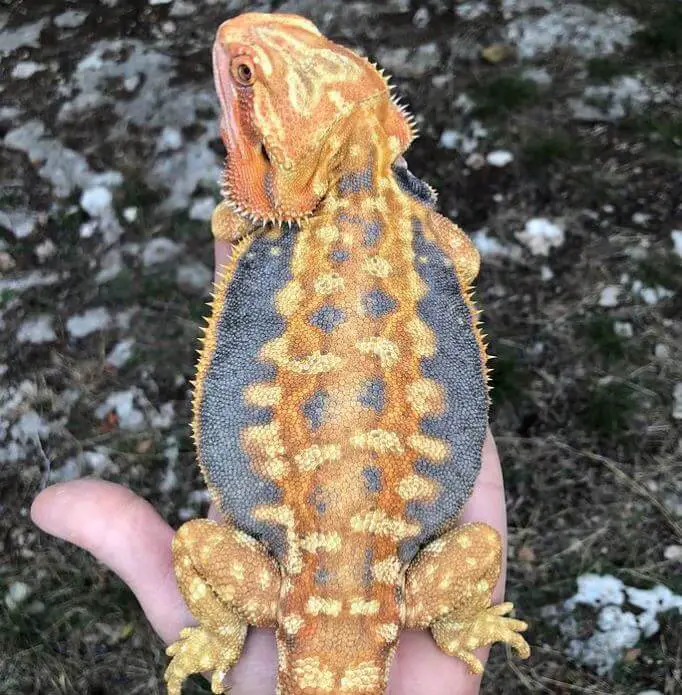
Thirdly, both morphs and typical beardies prefer arid and warm places in Australia.
Because they are cold-blooded animals, temperature plays an essential role in their lives and balances their bodies.
That is to say, you can not see them appear in frozen or drought areas.
Moreover, if you are close enough to those guys, you might have chances to look at them lazily basked in your front yard, on the tree branches, or on fence posts.
4. Counters
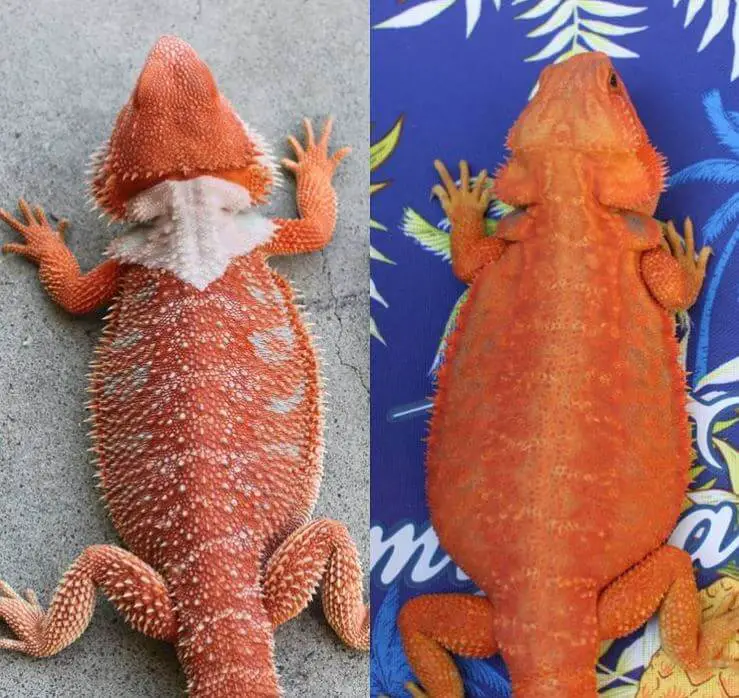
Lastly, it is easy to recognize that both dunner fancy and typical beardies have the same way to attract females.
The guys often wave their arms, bob small yet cute heads, and pound their feet to the ground.
The brave beardies usually pursue their lovers to show their intense obsession.
When mating, males bite the females’ necks.
In the breeding period, females can lay two different clutches of 10 to 30 eggs in a single mating.
Well, perhaps that is the way those women show their love or compensate for the crazy guys.
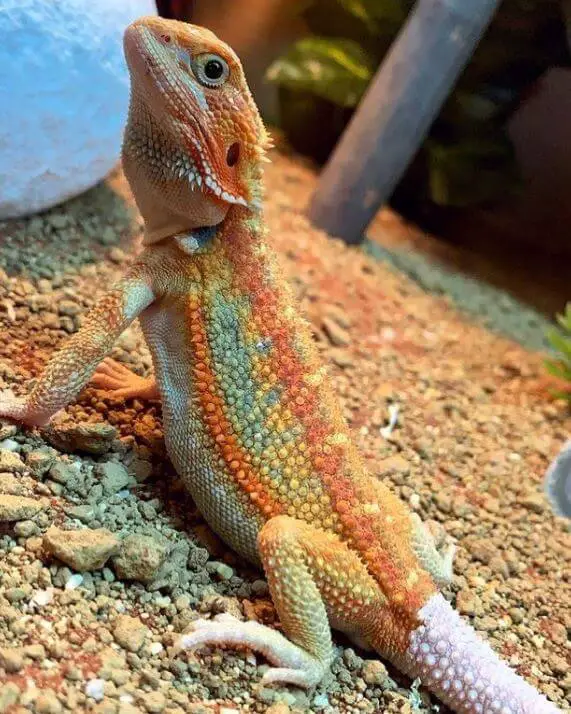
What’s more, those beardies massively depend on the temperature, especially in the incubation phase.
The sex of their tiny embryos might be changed if it becomes abnormally hot or cold.
For instance, when the temperature highly goes up, a male baby can transform into a female.
The hot weather can make those animals dumber in the long term.
How to Know If a Bearded Dragon Is Morphing?

Rarely could you see a morphing bearded dragon.
Often, they change from color to color to communicate with others or get used to the current temperature.
Morphs are different even when they are eggs like a zero-dunner bearded dragon.
You can find some popular morphs below:
- Translucent morph
- Leatherback morph
- Hypo beardies
- Paradox morph
- Witblits bearded dragon
Do Dunner Bearded Dragons Come in Different Colors?
Of course, dunners can come in different colors.
Because they are morphs, there are many artificial ways to create a fancy with your favorite color.
It is not hard to find everything from a rainbow baby to hypo citrus leatherback dunners.

Are Dunner and Paradox Bearded Dragons the Same?
The answer is no. While both are morphs, they have distinct features.
For example, they own different scales and skin.
Besides, dunner guys have a more rugged and primitive appearance.
On the other hand, paradox appears to be more beautiful and attractive.
How to Take Care of a Dunner Bearded Dragon Correctly?
It is believed that taking care of a dunner is much harder than cats or dogs.
Because of their specific behaviors and requirements, most beginners can not raise them until adulthood.
As a result, there are some steps you should follow to avoid abandoning any beardie regretfully.
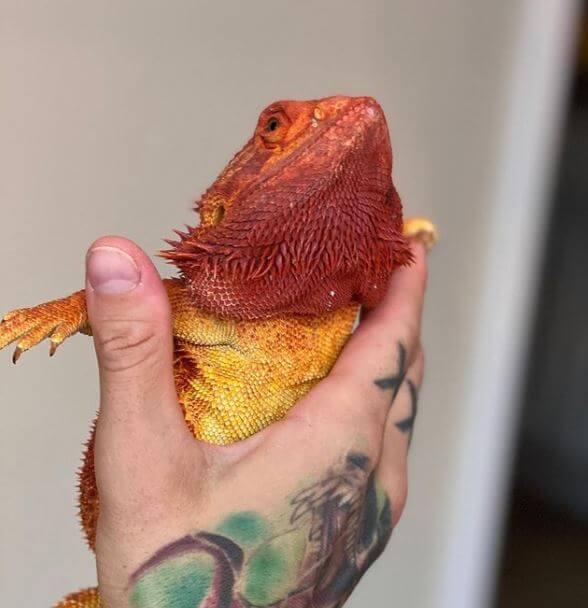
1. Daily Feeding
With cold-blooded animals, a warm place with a temperature of around 100°F is ideal for them to digest food.
Therefore, do not feed your small pet until the morning lights are turned on. Wait for your little friend to heat up.
There’s no difference between a dunner bearded dragon VS normal bearded dragon in that aspect.
By contrast, this kind of lizard does not like the lights turned off right after eating the last meal.
You should wait about one or two hours for her to digest.
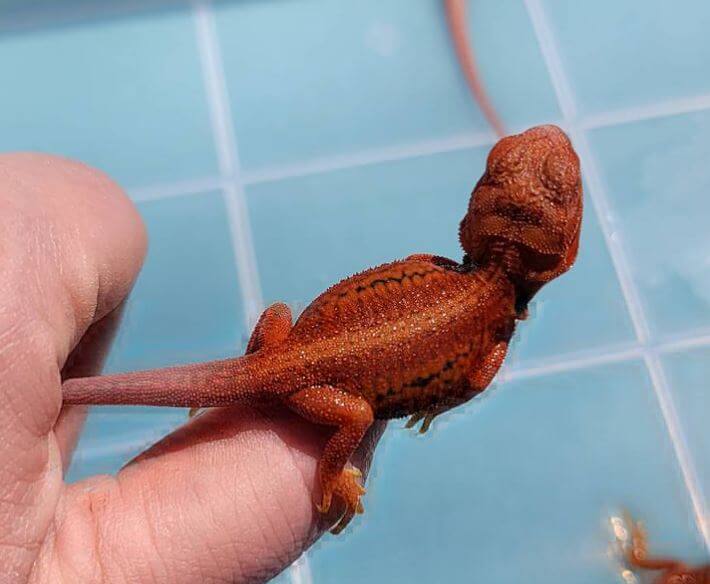
Moreover, some dunners might prefer holding food in the back of their throat before swallowing.
As kids, it takes time for them to eat those”boring” food.
Perhaps they want to get your attention or suck on those candies as long as they wish.
Therefore, there’s no need to worry about the habits until the morphs show malfunction signals or other health problems.
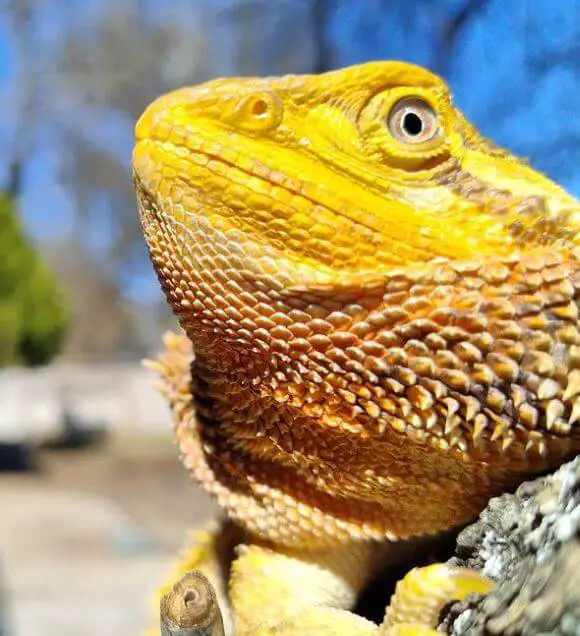
Moreover, another rule for owners to feed those innocent animals is that young dunner beardies need more protein than mature ones.
That is to say, the kids’ ratio should contain around 80% of insects and 20% of greens.
The food’s size must be smaller than the distance between their eyes. They can be jammed in the guts or hurt the spinal cord if it’s too big.
2. Handling and Bonding
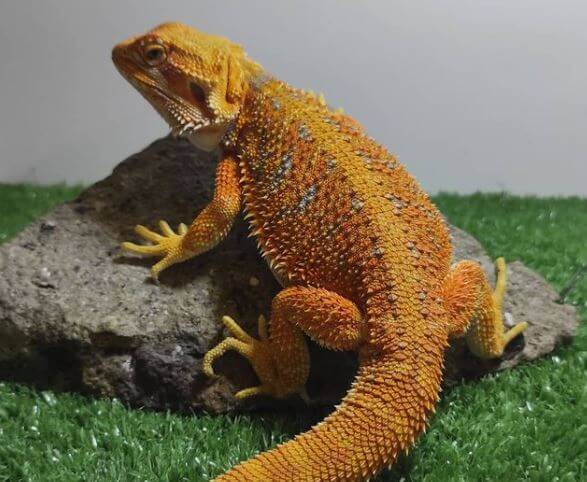
Similar to kitties, dunners love using their day to bask in the sunlight. But that does not mean they hate being bonded or handled.
In reality, they love those gestures.
For more details, juvenile beardies are too fragile that even a tiny change in the environment can kill or hurt them.
Mature ones are more strong, and they can be acclimated to cuddling. Over time, your dragon may get used to your call, touch, and voice.
Until then, you can easily let your pet on your lap or even head to watch TV, wander around the neighborhood, or on car roads.
Keep in mind to protect your pet carefully before holding them out of their shelter.
For example, do not let dunners go under the couch, television, door, or behind the stove.
Do not be fooled by their daily habit, small size, or slow motion.
The older they get, the less danger they have in your house.
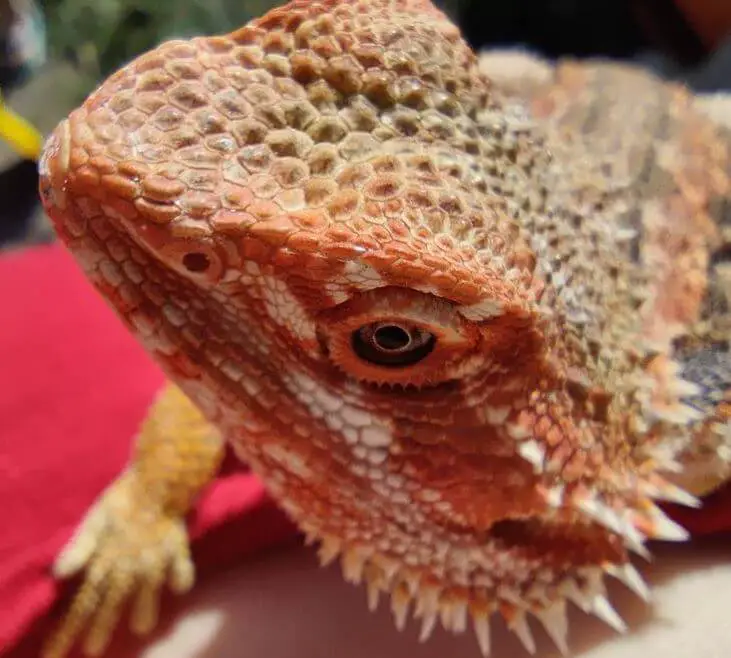
What’s more, move potentially dangerous pets like cats or dogs to different places in your house.
Sometimes, dunners are threatened or attacked by those counterparts.
Concerning floors, you are suggested to choose concrete, linoleum, or hardwood floors.
Do not raise the dragon in carpeted rooms. His toes or limbs can be stuck in carpet threads, making it hard to move.
Additionally, you might not want to see them poop out of the pricey carpets.
Dunners are pretty curious, so they might be lost if you let them roam freely.
Please keep your eyes open and play with them outdoors.
3. Bathing
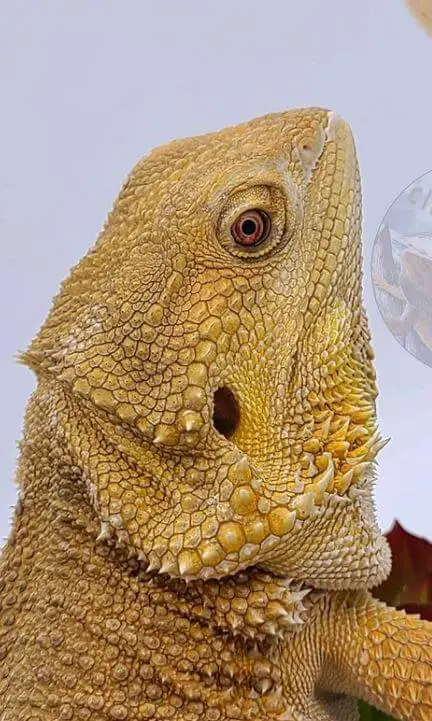
Although most bearded dragons love arid areas, they also enjoy the bathing time.
The activity helps them clean, shed, poop accurately, and exercise simultaneously.
Typically, owners bathe their pets once a week or month, making their skin consistently hydrated.
But rarely or never do someone have dunners cleaned. However, it is ideal for bathing any pet as a habit.
It will help you ease potential infectious diseases related to animals.
Moreover, when bathing tiny dunners, you should use a plastic tub or sink.
The water’s temperature must be higher than 85°F. You can place a rock in the tub so your pet can climb on while having a shower.
Frequently Asked Questions About Dunner Bearded Dragon VS Normal Bearded Dragon
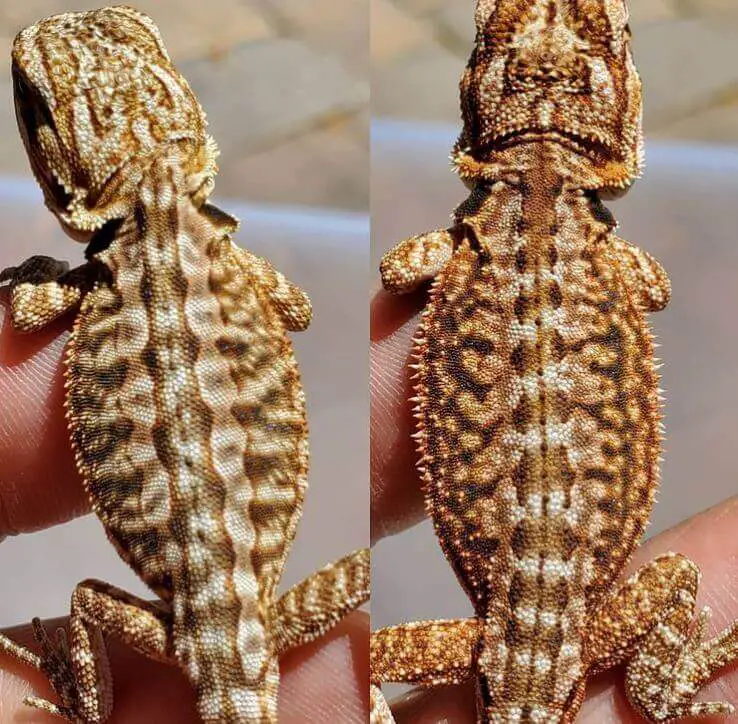
1. What Is the Rarest Dunner Bearded Dragon Color?
It is tough to see blue or purple dunner-bearded dragons.
Those types of dragons are rare in the natural environment, so it takes much effort to create artificial facilities and methods.
Moreover, some purple dunners are reported to have shorter lifespans than others.
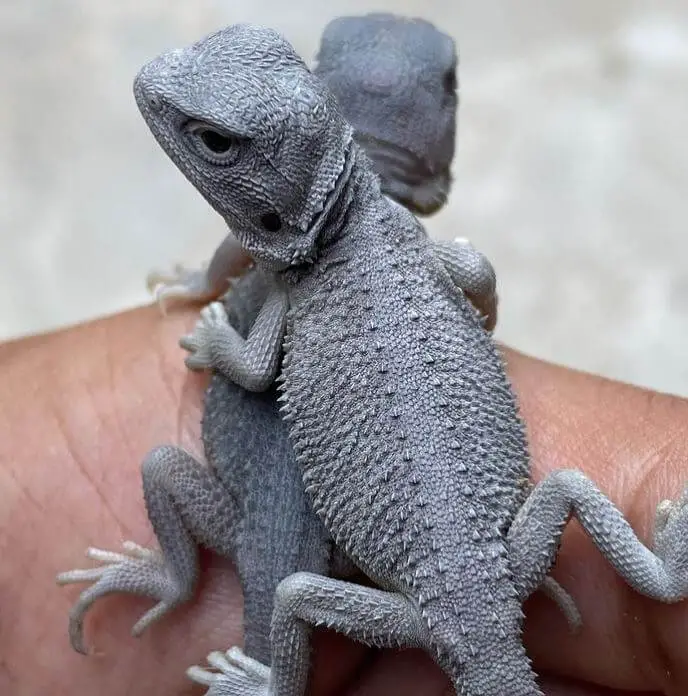
2. How Much Is a Dunner Bearded Dragon?
A dunner costs around $300 to $500, which is much more expensive than normal beardies.
However, that is not the most pricey one.
You even need up to nearly $1000 to have a zero morph.
3. What Is the Most Common Bearded Dragon?
The most popular beardie is Pogona Vitticeps, known as the inland or central dragon.
She comes from the arid to semi-arid southeastern areas of Australia.
There are also eight other species. Most of them are active and gentle.
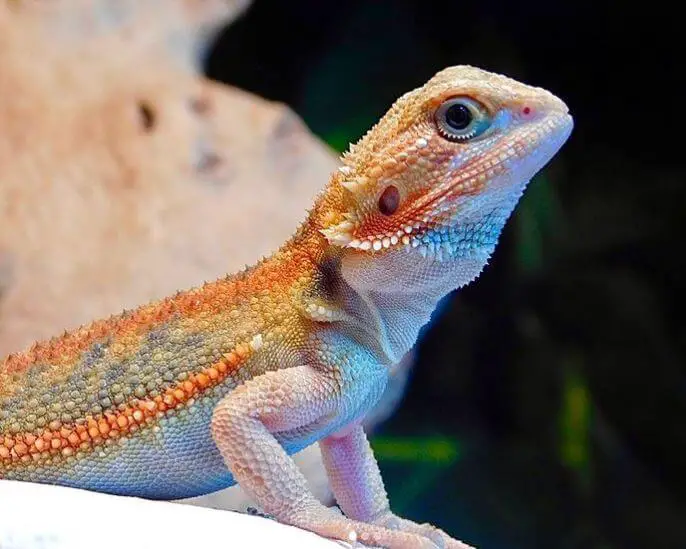
4. How to Tell If a Bearded Dragon Is a Dunner?
A normal beardie features scales like teardrops.
Those scales of dunners are conical, making them have a rougher and more primordial look.
Besides, a dunner has slightly larger feet and a longer tail.
5. What Colors Do Bearded Dragons See?
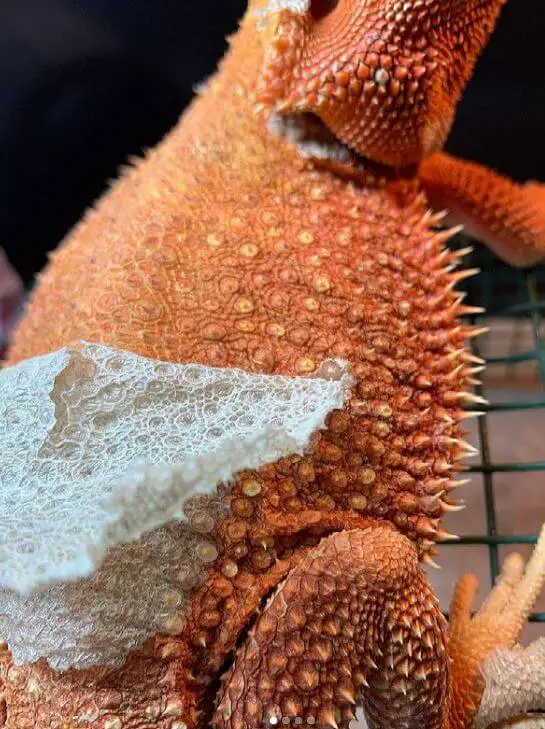
Few buyers think that beardies are color-blind.
That is not true.
That said, they can see as many colors as humans do.
Some species even see a more considerable range of colors than us, and they notice light colors better than dark ones.
Conclusion
What is the difference between a dunner bearded dragon VS a normal bearded dragon?
They are primarily different in scales, feet, coloration, and prices. However, they also have many standard features such as behavior, habitat, courtship, and diet.
We hope the article has helped you distinguish those animals in the best way.
Key points on dunner bearded dragons vs normal:
Dunner bearded dragons and normal (or standard) bearded dragons are popular pet reptiles, each with its own unique characteristics and traits. Let’s compare these two bearded dragon variations to help you understand the differences:
1. Morph Appearance:
- Dunner Bearded Dragon:
- Dunner dragons are known for their unique, wavy or “dunner” pattern on their scales, which gives them a distinctive appearance.
- Normal Bearded Dragon:
- Normal bearded dragons have a more standard appearance with evenly textured scales and typical coloration.
2. Coloration:
- Dunner Bearded Dragon:
- While their base coloration can vary, dunner dragons typically have a more vibrant and prominent coloration, making them visually appealing.
- Normal Bearded Dragon:
- Normal dragons often display the classic bearded dragon colors, including shades of tan, yellow, or brown, with less contrast.
3. Scale Arrangement:
- Dunner Bearded Dragon:
- The wavy, dunner pattern often gives them a slightly different scale arrangement compared to normals.
- Normal Bearded Dragon:
- Normal dragons have a more regular and consistent scale arrangement.
4. Temperament:
- Dunner Bearded Dragon:
- Dunner dragons generally have temperaments similar to that of normal bearded dragons.
- Both variations can be docile, friendly, and make great pets when properly socialized.
5. Size:
- Dunner Bearded Dragon:
- Dunner dragons and normal dragons have similar size ranges. Adults typically reach a length of 18 to 24 inches (45-60 cm).
- Normal Bearded Dragon:
- Normal dragons also fall within the same size range as dunnerns.
6. Habitat and Care:
- Dunner Bearded Dragon:
- Both dunnerns and normals have similar habitat and care requirements, including proper heating, UVB lighting, and a well-maintained enclosure.
- Normal Bearded Dragon:
- There are no significant differences in their care needs.
7. Lifespan:
- Dunner Bearded Dragon:
- Dunnerns have a typical lifespan of 10-15 years when provided with proper care.
- Normal Bearded Dragon:
- Normal bearded dragons share a similar lifespan range, which makes them long-term companions.
8. Breeding and Genetics:
- Dunner Bearded Dragon:
- The dunner gene is a recessive genetic trait. When breeding, two dunnerns are required to produce dunner offspring.
- Normal Bearded Dragon:
- Normal bearded dragons do not carry the dunner gene, and their offspring are typical normals.
9. Availability and Price:
- Dunner Bearded Dragon:
- Dunnerns can be less common in the pet trade, and their price may vary depending on availability.
- Normal Bearded Dragon:
- Normal dragons are readily available, and their prices are typically more affordable.
10. Personal Preference: – The choice between a dunner and a normal bearded dragon often comes down to personal preference regarding appearance.
In summary, both dunner bearded dragons and normal bearded dragons make excellent pets, with similar care requirements and temperaments. The primary distinction lies in their appearance, with dunnerns featuring a unique, wavy scale pattern and vibrant coloration. Ultimately, your choice should be based on your preference for their aesthetic differences, as their care and needs are largely the same.
Further Reading:
- Carolina Custom Cages Terrarium Review
- 8 Best Basking Rocks for Beardie: What Is the Best Choice?
- 10 Best Thermometers for Beardie: How to Choose the Best One?
- 5 Best Beardie Lighting Setups for Beardie Lovers
- 9 Best Heat Lamps for Beardie: Natural Habitat Provided

